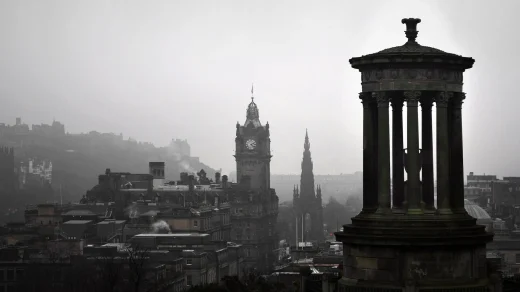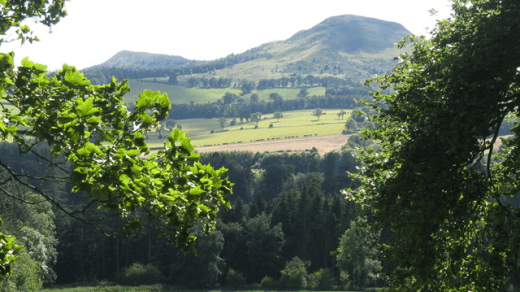Wishaw, Glasgow.
/ˈwiʃɔː/ i (Scots: Wishae or Wisha /ˈwiʃi/ i; Scottish Gaelic: Camas Neachdain) is a large town in North Lanarkshire, Scotland, on the edge of the Clyde Valley, 15 miles (24 km) south-east of Glasgow city centre.The Burgh of Wishaw was formed in 1855 within Lanarkshire. it formed a joint large burgh with its neighbour Motherwell from 1920 until its dissolution when Scottish local authorities were restructured in 1975, and was then in Motherwell district within the Strathclyde region until 1996. The town is part of the Motherwell and Wishaw constituency. It has the postal code of ML2 and the dialling code 01698.

Geography and climate.
Wishaw lies within North Lanarkshire, the fourth largest local authority in Scotland by population. The town is located in the relatively level Central Belt area; while there are valleys and high moors, there are no hills or summits over 1,640 feet.
The defined “locality” of Wishaw had a population of 30,290 in 2016, the 26th largest such place in the country. Along with its neighbours of Hamilton, Bellshill and Motherwell it had been considered to form part of the Greater Glasgow conurbation, which as of 2019 had a population of around 1,670,000 (around a third of Scotland’s total) however, since 2016 Wishaw, Motherwell and Bellshill have been officially considered separate from the Glasgow ‘settlement‘ due to small gaps in the chain of occupied postcodes used to determine a grouping, and instead form their own settlement which itself has the fifth largest population in Scotland at 124,000.
Wishaw experiences mild summers and cool winters, with the most rainfall coming between October and March. Snow, while not unheard of during winters, is not the norm. Most winters in Wishaw see around 10–20 days of snow. The warmest month on average is July, with an average daily temperature of 14.7 °C, while the coldest is January with an average daily temperature of 2.3 °C.
Wishaw lies on two rivers, the Clyde running near Overton and Netherton and its tributary the South Calder Water, further north near Coltness and Newmains.
Etymology.
It is not certain how Wishaw’s name came into being. The town is named after Wishaw House, a large manor built in the woods by the South Calder Water. The house was probably built some time after the sale of the lands of Coltness, Wishaw, Watstein and Stain to the predecessor of Lord Belhaven: Hamilton of Uddsten.[11] It could be a corruption of “Via shaw” meaning “way through the woods”, which would make sense as an ancient Roman road was built through the modern town. Yet another theory is that the name derives from “Wee Shaw”, meaning small wood, or that the “wis” comes from the medieval Scots for “water”, meaning “water wood”.
In Scottish Gaelic, the main name of the town is, Camas Neachdain

History
Ancient history
The area of what is now Wishaw once lay on important Roman roads that ran through the areas of the Clyde (Latin – Cluta) and South Calder Water. In fact, the current Main Street is based on a road built by the Romans. Another such road ran close to Wishaw House.
In the 1960s, a pagan religious figurine was found in the woods near Netherton, showing that there was some form of settlement near Wishaw before the Christianisation of Scotland, which occurred between 400 and 600 AD.
Medieval era
A small church was established by a bend (camas/cambo- in Cumbric) on the banks of the Clyde near what is now Netherton in the eighth century. There is however dispute to whether this was named after (or established by) Neithon of Alt Clut or perhaps St Ninian. Nonetheless, the area became known as Cambusnethan or Kamnethan from then on. The site of the original church remains as a ruined burial ground, including an impressive mausoleum to Lord Belhaven. The churchyard is notably round, similar to those found in Wales and Ireland, suggesting it could have been built on an earlier Celtic temple. Excavated from this area was the Cambusnethan Stone, a large Christian tablet created by the Strathclyde Britons.
In the 12th century, a Norman lord constructed a large manor near Gowkthrapple, as well as another small church. This was the beginning of the parish of Cambusnethan, which lasted up until 1930. In the 13th century, administrative control of the parish was ceded to Glasgow from the previous Kelso Abbey. Small fortresses and tower houses were built, and after the Scottish Wars of Independence, the barony was transferred by Robert the Bruce to local lords, however the title lay abandoned by the 20th century. The Somervilles of Cambusnethan were the principal aristocrats in the area, although sold their land to Sir James Steuart,later Lord Provost of Edinburgh in 1653. Wishaw House is thought to date back to the 15th century, and appears on Pont’s map of Scotland from 1583, as Wisha. The settlements of Greenhead, Camnethan, Peddyr and Overtoun of Camnethan also appear.
The ruined church on Kirk Road, mere yards away from the current Cambusnethan church, is thought to date back to the 1600s or earlier.
Modern era
In the 18th century agriculture in the area consisted mainly of growing oats although some wheat and pear trees were cultivated. Members of the Reformed Presbyterian Church took up the favourable terms of the proprietor to enable them to establish a congregation in Wishaw in 1792. The village itself was laid out in 1794, named Cambusnethan, and later renamed Wishawtown.
In 1801 the population of Wishaw was about 400 and that of the whole parish only 1972. In the 1830s Lord Belhaven set up a distillery in Wishaw. Other nineteenth century industries included coal mining, iron and steel making, foundry work, railway-waggon building and fire-clay making. Wishaw grew dramatically in the 1830s, with railways and gasworks coming to the town, many collieries opening during this time period. By the time the Caledonian Railway‘s main line came through Wishaw in 1848 it was a major mining centre fueling an important part of Scotland’s industrial heartland. There were also factories for needle-work and tambouring, and confectionery. On 4 September 1855, the town was incorporated with the villages of Coltness and Stewarton to form the Burgh of Wishaw, with a population of approximately 5,000. Four years later, in 1859, St.Ignatius Parish Church was established, and the church built on Young Street, where it remains to this day. In 1882 Groome recorded that there were 5 schools in Wishaw as well as others in nearby villages. Wishaw in the middle of the 19th century was visited by the Polish composer Frédéric Chopin. Chopin was entertained at Wishaw house and played there for the family, the Hamiltons of Belhaven.
Wishaw and its nearby neighbour of Motherwell were once the centre of steel manufacture in Scotland, as both towns were located either side of the former Ravenscraig steelworks which closed in 1992. The (now-defunct) local firm of R Y Pickering & Co Ltd (later Norbrit-Pickering) built railway rolling stock (especially wagons) and many tramcars for tram systems throughout the UK. One of its last tramcar orders was for 10 double-decker trams for Aberdeen Corporation Tramways in 1949. In November 1996, the world’s worst recorded outbreak of E. coli O157 occurred in the town, in which 21 people died and around 200 were infected.

Recent decades
The town has recovered from the loss of industry such as steelworks and coal mines which were shuttered in the 1980s and 1990s. In the 2014 Scottish independence referendum, Wishaw along with its neighbour Motherwell, voted 52% in favour of Scottish independence, meanwhile 48% voted against independence. Since 2015, Wishaw has voted SNP in both general elections and local Scottish elections, replacing Labour as the dominant party of the town. Wishaw also has a Scottish Conservative Councillor since 2017.

These days, North Lanarkshire Council suggest that the majority of the biggest employers in the town are supermarkets, with the exceptions of Royal Mail, which has its main Scottish distribution centre at Shieldmuir and the NHS as a result of University Hospital Wishaw. There are many service industry businesses located in the town’s industrial areas, though none with more than a few hundred employees.



